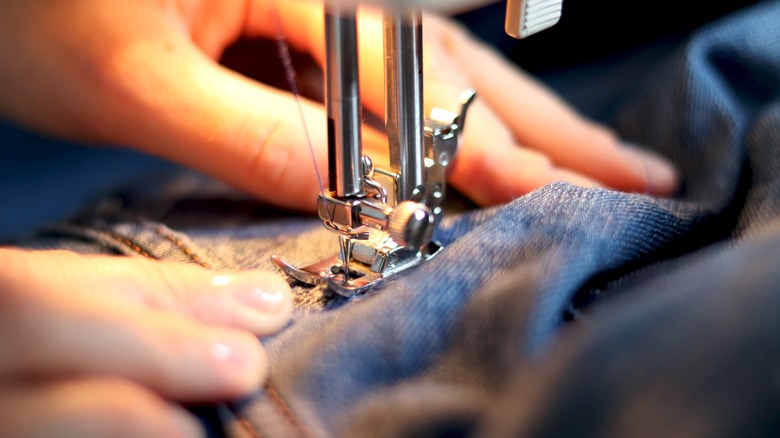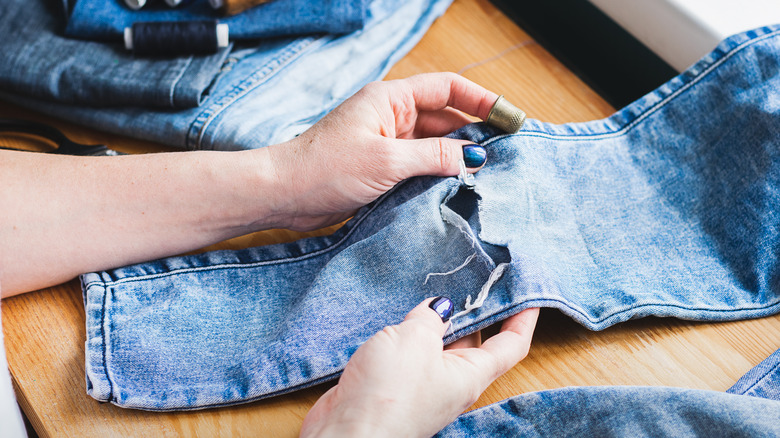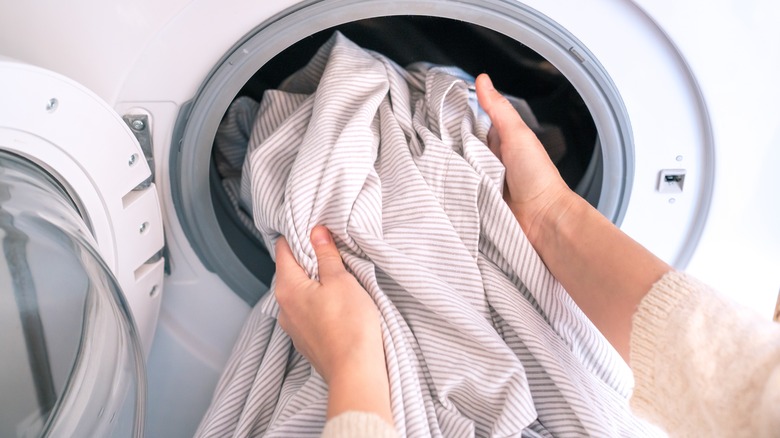Why You Need To Fix Your Torn Clothing Before Putting It In The Laundry
You may be tempted to put torn clothing into the laundry and worry about mending it later, but that would be completing the tasks in the wrong order. You should always fix torn clothing before running it through the washer and dryer. If you place items that have rips and tears into the washing machine, chances are that the damage will get a lot worse. The movement of the washing machine and dryer can be pretty intense and can exacerbate any existing issues. With all of the tumbling that occurs, rips can expand and get harder to fix.
Instead of washing torn articles of clothing, learn a few simple tricks for mending them. Get into the habit of always taking the time to give your tattered items a few adjustments ahead of a wash. While it may slow you down and take some extra time, doing so will save you from bigger headaches later on.
How to fix torn clothing before washing
You don't have to be an experienced tailor to fix torn clothing. The process is easier than you might expect and there are several ways to mend holes and fix ripped seams. One option is to grab a needle and thread and stitch up the fabric by hand. Although this is a bit slower than using a sewing machine, it's a pretty straightforward practice that anyone can do. It also allows for a lot of precision, especially when you're just dealing with smaller rips and tears.
If you have the experience and know-how, machine stitching can also be a good option. However, be sure to choose the right type of stitch. A straight stitch is usually sufficient for a ripped seam, but you may want to consider a zigzag stitch for a hole. On the other hand, a buttonhole stitch, as you might surmise from its name, is better suited to reattach a button.
If you're not skilled with sewing, you might want to consider other options for mending your tattered clothing; for instance, you can use an adhesive such as fabric glue or iron-on mending tape. Both methods don't require sewing and can work well. Adhesives can take some time to dry, however, so be sure to keep this in mind. You may need to let your clothing sit for as long as 24 hours before tossing it in the washing machine after using fabric glue or mending tape.
Reducing wear and tear in the washing machine
Although holes and tears may be present in your clothes before you place them in the washing machine, sometimes damage only appears after washing. Your washing machine could be shredding your clothes, so be sure that you're using it correctly. Always start by sorting your clothes. Remember that you shouldn't wash lighter, permanent press items with heavier items. Also, consider washing delicate items in a washing bag to give them extra protection.
You should also look out for sharp items that could cause damage inside the washing machine and dryer. Belt buckles, zippers, hooks, and other sharp objects could potentially poke through clothing and rip other items. Consider zipping up zippers, fastening buttons, and turning certain types of clothing inside out if you expect there could be problems.
Additionally, avoid overloading the washing machine since doing so can lead to more friction and increase the risk of issues. You should ensure clothing can move freely and that you're using the correct water level setting. Although fast spinning is fine for cotton and bulkier clothing, it can cause damage to delicates, so keep this in mind while choosing your laundry machine settings. Finally, remember that leaving stain remover on for too long or applying bleach directly can create holes in your clothing. Be careful when using these chemicals if you want to protect your clothing and other fabrics.


